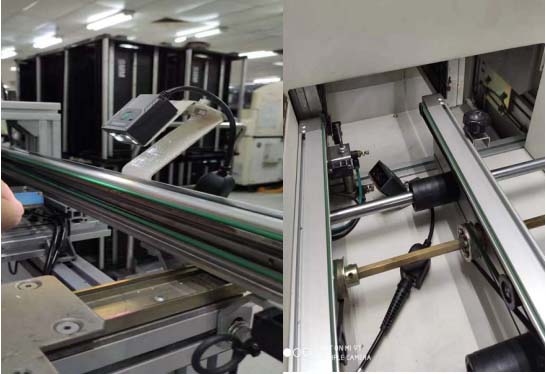
**introduce**
Over the years, significant technological advancements have enriched the face of manufacturing, incorporating efficiency and precision into its core. Among these advancements, QR code modules have positioned themselves as a key linchpin in the evolution of assembly lines. My experience in manufacturing technology has been marked by constant learning and adaptation, and integrating QR code modules into assembly lines is a chapter worthy of discussion.
**Understand QR code technology in the industry**thy of discussion.
QR codes, those seemingly simple black and white squares, contain a wealth of information that can be accessed with a simple scan. In addition to their obvious uses in advertising and consumer products, these codes also play a key role in industrial applications, particularly in assembly lines where efficiency is critical. My first-hand experience has shown me the value of clarity and speed in the manufacturing process, advantages that QR codes seamlessly embody.
**The essence of QR code module**
In busy assembly line environments, QR code modules serve as beacons of data integrity and accessibility. These modules integrate scanning hardware and software and are optimized for the stringent requirements of industrial applications. In contrast to traditional barcode systems that often face capacity and durability issues in industrial conditions, QR code modules are designed to thrive. The durability and efficiency provided by these modules is unparalleled, something I have seen firsthand when replacing older barcode systems on past projects.
Integrating these systems into assembly lines does come with its own set of challenges – from ensuring clear, unobstructed placement for optimal scanning to implementing strong data protection measures. However, the upfront investment of time and resources will always pay dividends in terms of operational efficiency and data accuracy.
**Practical Applications and Advantages**
Perhaps the most compelling reason to adopt QR code modules in assembly lines is their unparalleled advantages in tracking and traceability. In one memorable project, implementing QR code scanning at every site significantly reduced incidents of product misplacement and saved countless hours of manual tracking.
Additionally, the scalability of QR code systems means they can store more data and be updated without changing the physical label, which I take advantage of by including live production updates directly on the product’s QR code. This not only enhances quality control but also provides valuable data for optimizing the assembly process.
Stationary industrial scanning systems and industrial barcode scanners, while initially more expensive than handheld devices, justify their price with significant improvements in speed and accuracy. The current market price of these complex devices ranges from a few hundred to several thousand dollars, reflecting their functionality and the value they add to the manufacturing process. In my experience, investments in this type of technology often result in significant long-term savings and efficiency gains.
**Challenges and Strategic Considerations**
The process of integrating QR code modules into assembly lines is not without its hurdles. My experiences have taught me the value of thorough planning and preparation. Initial setup costs, staff learning curves, and integrating these systems into existing workflows are all important considerations. Additionally, it is crucial to protect the data encoded in QR codes, as they may be vectors of critical information.
**Best Practices for Smooth Integration**
From several successful integrations, I've discovered a few key practices that can facilitate a smoother transition to using QR codes in the assembly line. First, it is crucial to choose hardware that is sturdy and reliable. The industrial environment is very harsh, and the service life of scanning equipment directly affects its effectiveness. Training is another key component – ensuring employees are familiar with and proficient in new technology can determine the success or failure of its implementation.
Finally, it’s important to embrace flexibility. Adaptation and continuous improvement should be part of your approach, allowing your system to evolve with your operational needs.
**Looking to the future: QR codes in industrial manufacturing**
The future of industrial manufacturing is intrinsically linked to technologies such as QR codes. As we move further into the era of Industry 4.0 and smart factories, the real-time data tracking and analysis capabilities provided by QR code technology will become even more valuable. My experience has reinforced my belief in the transformative power of this technology to impact not only the efficiency of manufacturing processes, but also the broader capabilities of supply chain management and product lifecycle tracking.
**Cinclusion**
The integration of QR code modules into assembly lines is a testament to the relentless pursuit of efficiency and precision in manufacturing. Reflecting on my journey, each successful project has underscored the profound impact of this technology on operational effectiveness. As industry professionals, it's incumbent upon we harness these advancements, continually pushing the boundaries of what's possible in manufacturing.
The narrative of QR code technology in assembly lines is far from complete, but its chapters thus far have been marked by significant achievements and lessons learned. As we look to the future, there's no doubt that this innovative technology will continue to play a crucial role in shaping the landscape of industrial manufacturing.
Contact Us:
If you want to know more information? Please fill in the following message form, we will contact you in the first time.
Copyright 2019 - 2024 Shenzhen Rakinda Technologies Co., Ltd. All Rights Reserved www.rakinda.com Privacy Policy




